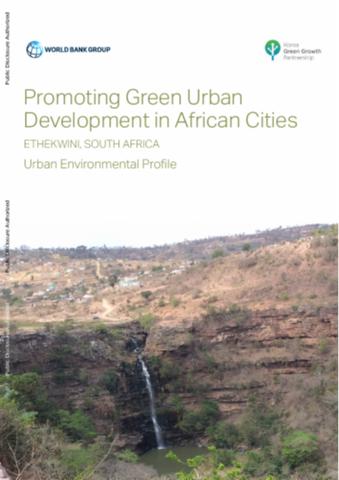The World Bank is a vital source of financial and technical assistance to developing countries around the world. We are not a bank in the ordinary sense but a unique partnership to reduce poverty and support development. The World Bank Group has two ambitious goals: End extreme poverty within a generation and boost shared prosperity.
- To end extreme poverty, the Bank's goal is to decrease the percentage of people living on less than $1.25 a day to no more than 3% by 2030.
- To promote shared prosperity, the goal is to promote income growth of the bottom 40% of the population in each country.
The World Bank Group comprises five institutions managed by their member countries.
The World Bank Group and Land: Working to protect the rights of existing land users and to help secure benefits for smallholder farmers
The World Bank (IBRD and IDA) interacts primarily with governments to increase agricultural productivity, strengthen land tenure policies and improve land governance. More than 90% of the World Bank’s agriculture portfolio focuses on the productivity and access to markets by small holder farmers. Ten percent of our projects focus on the governance of land tenure.
Similarly, investments by the International Finance Corporation (IFC), the World Bank Group’s private sector arm, including those in larger scale enterprises, overwhelmingly support smallholder farmers through improved access to finance, inputs and markets, and as direct suppliers. IFC invests in environmentally and socially sustainable private enterprises in all parts of the value chain (inputs such as irrigation and fertilizers, primary production, processing, transport and storage, traders, and risk management facilities including weather/crop insurance, warehouse financing, etc
For more information, visit the World Bank Group and land and food security (https://www.worldbank.org/en/topic/agriculture/brief/land-and-food-security1
Resources
Displaying 496 - 500 of 4906Institutional Models for a Future Recognition and Registration of Customary (Communal) Tenure in Myanmar
Paper prepared for presentation at the 2016 WORLD BANK CONFERENCE ON LAND AND POVERTY, The World Bank - Washington DC, March 14-18, 2016
Promoting Green Urban Development in African Cities
The city of eThekwini or Durban has undergone a period of rapid urbanization that has contributed to the degradation of the city’s natural environment. Climate change is placing further strains on the city’s ability to manage the urban environment. The urban environmental profile of eThekwini has been prepared as the first component of the assignment promoting green urban development in Africa: enhancing the relationship between urbanization, environmental assets and ecosystem services, a project being conducted under the leadership of the World Bank.
Improved Nutrition through Agricultural Extension and Advisory Services
Even after several decades of green
revolution, malnutrition continues to be a major development
challenge in much of South Asia, and India has a major share
of the malnourished people in the region. For nutrition
goals to be integrated into extension the curricula provided
to current and future agricultural extension agents must be
revisited. As part of the South Asia Food and Nutrition
Security Initiative (SAFANSI), this paper focuses on
City Risk Diagnostic for Urban Resilience in Indonesia
In 2012, the World Bank initiated the
building urban resilience in East Asia program, aimed at
increasing the resilience of cities to disasters and the
impact of climate change by using a risk-based approach to
making public investment decisions. The objective is to
demonstrate a scalable methodology and practical tools for
risk assessment that can be used for city-level investment
decisions. This activity started with engaging selected
Climate Information Services Providers in Kenya
Agriculture is a major driver of the
Kenyan economy, contributing 54 percent to the national
gross domestic product (GDP) and accounting for 65 percent
of total export earnings. Kenya’s GDP growth is highly
correlated with the sector’s performance, and its
performance is highly volatile. The frequency and intensity
of severe weather events has increased, and will be further
exacerbated as a result of climate change. The country’s








